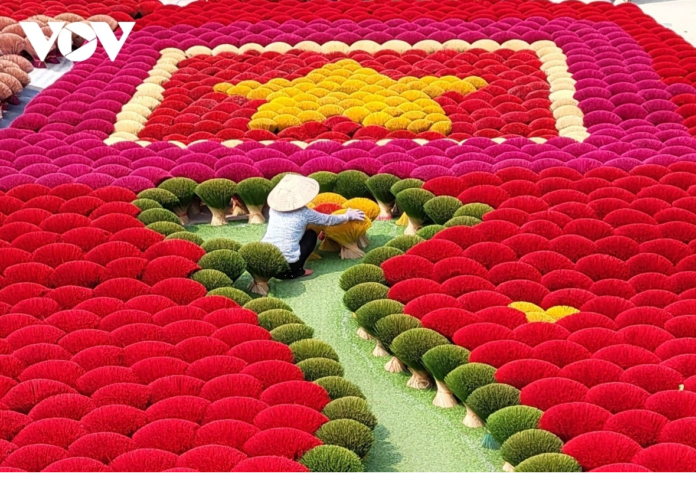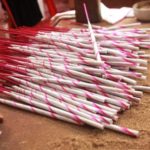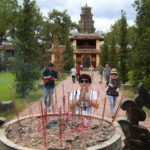A local news outlet reported that the villagers in Quang Phu Cau village have been manufacturing joss sticks for over a century. This cottage industry produces an average of 200 tonnes of material and 50 tonnes of incense each month.
This mesmerizing display of dyed bamboo bundles attracts up to 500 visitors per day on weekends, according to artisan Dinh Vinh. Vinh, who began making incense at the age of six and is now 65, shared this information.
In the past, the splitting of the wooden sticks for joss sticks was done by hand, but nowadays, machines are used, as mentioned in the article.
The fragrance of the incense sticks comes from a blend of ingredients such as agarwood, cedar, wormwood, patchouli, rosemary, and cinnamon. The scent is customized to suit different regions of the country.
Once completed, the incense sticks are sold nationwide and exported to various countries around the world.
Over 300 families in the village are engaged in incense production throughout the year, with heightened activity leading up to the Lunar New Year, when temples across the country receive numerous visitors.
Amidst concerns about declining incomes, artisan Dinh Vinh worries that younger generations are losing interest in joining the profession. However, he remains confident that the trade will not disappear entirely, as burning incense to remember ancestors and deceased loved ones is a fundamental part of Vietnamese spiritual beliefs.
Vietnamese people commonly burn incense to honor their ancestors on special occasions, including holidays, death anniversaries, family reunions, and the Lunar New Year.
Quang Phu Cau village, located 35 kilometers from central Hanoi in Ung Hoa district, has gained renown for its century-old incense-making craft, attracting both locals and foreigners in recent years.
Sights and smells of incense making village lure tourists
Thuy Xuan incense-making village, located some 7km southwest of the central city of Hue, has become a popular tourist destination.





